
″Hello Dan, it’s Joe here, I hope you’re keeping well. It’s the 21st of December and now they’re ringing the last bells …”
Ever since it was released in 1996, Paul Kelly’s song How to Make Gravy has been embraced as an Australian Christmas classic. It is not a jolly festive hit. Instead, it’s a tale of regret and loneliness, as prison inmate Joe writes to his brother Dan. There’s love, too, and longing and, yes, it includes that gravy recipe (“just add flour, salt and a little red wine. And don’t forget a dollop of tomato sauce for sweetness and that extra tang”).
The song’s fans are legion, so anyone wanting to turn it into a movie had better watch out. Enter musician Meg Washington and her director husband, Nick Waterman, who have boldly flipped the burgeoning Australian Christmas movie genre on its head with a beautifully moving story that speaks as much to Kelly’s song as it does to modern masculinity.
“The song speaks for a lot of men in some kind of way,” says Waterman. “That space between how men feel and what they actually say. It’s such rich territory to explore, and that was really what I connected with in this song. And I just knew instantly that this film holds masculinity at its core.
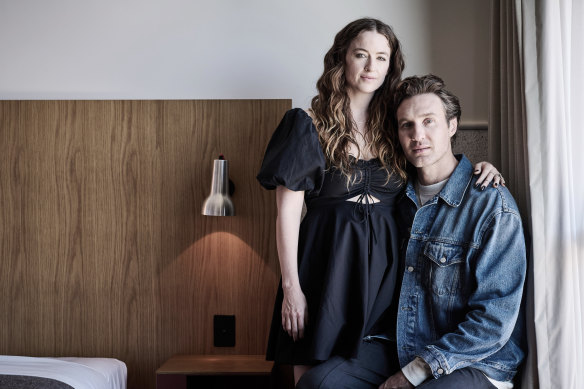
How to Make Gravy’s co-writers Meg Washington and Nick Waterman, who also directed the film. Credit: Joshua Morris
“You can hear Joe is desperately trying to let go of something so he can get home to his family, like he needs to undergo some kind of awakening. And [Charles Dickens’] Christmas Carol was a real inspiration for us as well, because, much like Scrooge, Joe’s experiencing an awakening at Christmas time.”
The film is steeped in the Kellyverse: the prison guards are named after the ingredients in the gravy, Joe wears a Paul Kelly T-shirt and the bus number 428 is the length of the song itself. Even the colour of the prison tracksuits – a terracotta instead of the standard green – was chosen to match the colour of gravy.
“For the stoners slash music nerds, there’s a lot in there,” says Washington.
The seed had been planted by a friend, who suggested they turn it into a film. They called Kelly’s manager and, yes, the rights were available. He then invited Washington and Waterman to Kelly’s concert in Brisbane the next night. The date? December 21, gravy day.
“By the time How to Make Gravy came along, it was raining, and there was 8000 people there,” says Waterman. “Everyone was standing there in the rain, holding each other, crying, and Meg and I turned to each other, and we were both weeping, and we just said to each other, ‘We have to do this.’ Just watching how the song was bringing people together, you could see how deeply connected people were to it.”
Why do they think the song has resonated so deeply?
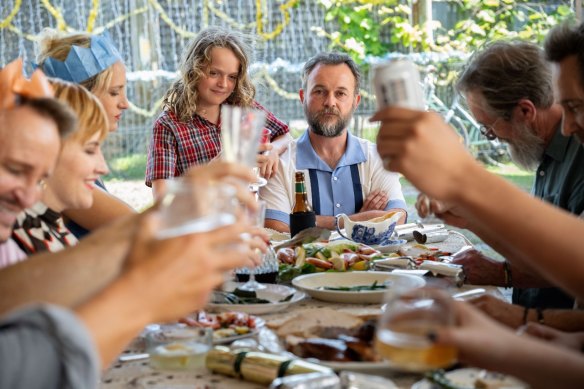
Angus (Jonah Wren Phillips) and Joe (Daniel Henshall) in How to Make Gravy.Credit: Binge
“Paul says of his own writing that he’s very inspired by [US author] Raymond Carver and the unfinished edges of that work,” says Washington. “And that’s what makes his own work so vivid. With a few brief strokes, he’s able to evoke so many shapes, but with such a brevity that there’s a lot of space for the individual to view their own meaning. And that’s just a sign of a master craftsman, really – there’s enough personal to be universal, or enough universal to be personal.
“And I think How to Make Gravy is such a mysterious song in a lot of ways because it hits you full-barrel, with this feeling that the song gives you, but at the same time, you don’t get a lot of information. You don’t know why he’s in prison, you don’t know who those people are. You don’t know any of those things. And I think every lyric in How to Make Gravy is like the tip of his own iceberg.”
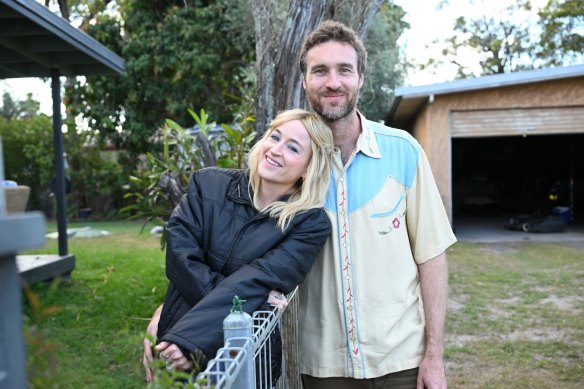
Meg Washington in character as Kelly in How to Make Gravy, with her husbane, director Nick Waterman.
With the rights secured, Washington and Waterman had a tricky needle to thread – how would they pay homage to one of Australia’s greatest living songwriters, keep the fans happy and make a film worth watching?
“We treated the song like it was Shakespeare,” says Waterman. “Like it was this sacred text in the way that it belongs to Australia. Not in terms of its age, but just how precious it is, you know, and that we had this responsibility to not f--- it up.”
The couple worked with a psychologist for six months to break down the song, its subtext, symbols and emotions and then tackled it line by line – Joe, Dan, Rita, the kids Angus, Frank and Dolly, sister Stella coming in from the coast, and her annoying husband Roger.
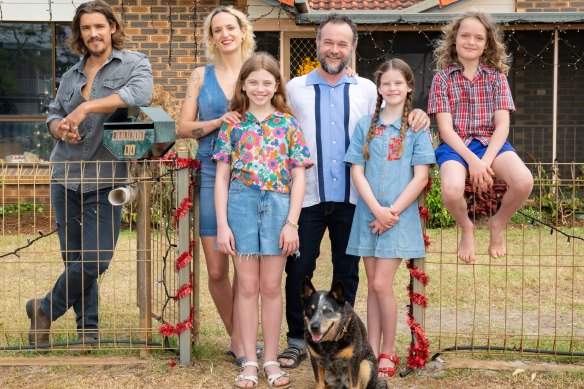
Dan (Brenton Thwaites), Rita (Agathe Rousselle), Joe (Daniel Henshall), Angus (Jonah Wren Phillips), Dolly (Izzy Westlake) and Frank (Rose Statham).
Joe is played by Daniel Henshall, who is as gentle offscreen as he is a tight ball of anger onscreen.
“He’s not in a great place,” says Henshall of Joe. “There are a few things that happened to him in his life that are happening again, and he hasn’t been able to deal with them. He didn’t have the capabilities or was of an age to have dealt with that kind of grief or trauma, and he’s recently lost a few things at the start of the film, and he’s feeling quite isolated.
“And the way he’s learnt to deal with those difficult emotions is by suppressing and getting on with it. And at this particular time of year, when family is around, the people that are arriving aren’t really acknowledging the loss or the pain. He also feels that those people haven’t been there for him and it manifests – all of this suppression, all of this grief and pain – in a pretty ugly way.”
Shot on the Gold Coast, with original songs by Washington, the film has a timeless feel to it – “Aussie Gotham”, is what Washington calls it – with magpies calling in background and the classic Queensland suburban look of brown lawns, big yards and neighbours talking over the fence.
“It resonates with most of our experiences of what a Christmas may have been like for us in our childhood,” says Henshall. “You’re taken back to the timelessness of it, and you’re not really sure what era the film is set.
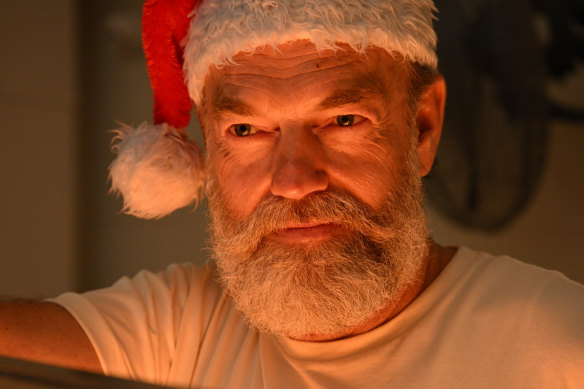
Hugo Weaving plays prison cook Noel.
“It speaks to the last 40 years of what it may have been like for you to have a Christmas with your family. It’s hot, you don’t like some of the people that have come to Christmas, but your house is the designated house that everybody comes to. You have to put on the spread and all the trimmings and all of that.”
Despite being a Christmas film, there is no Santa, but we do get a bushy-bearded Hugo Weaving in a Santa hat. “Iconic,” says Waterman.
Weaving plays Noel, who doesn’t appear in the song, but who runs the prison kitchen as well as a men’s group. He is Dan’s lifeline, someone who has a bigger outlook on the world than the walls of the prison.
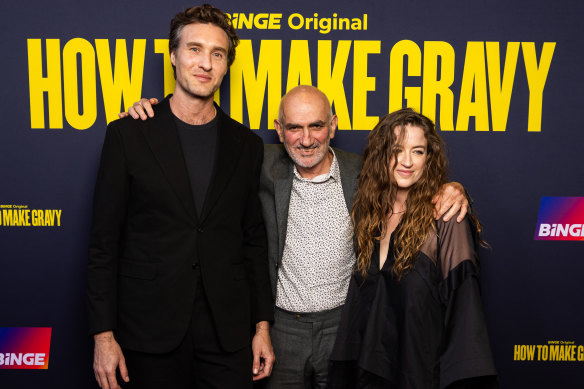
Paul Kelly (middle) with Meg Washington and Nick Waterman at the premiere of How to make Gravy.Credit: Ben Symons
“He’s a classic Australian male, but he’s learnt how to take responsibility for himself,” says Weaving of Noel. “He’s learnt to accept who he is and what he’s done wrong, and he has to start from there. He lives with what he’s done and he’s reconstituted himself.
Loading
“He’s allowed himself to say sorry, and he’s allowed himself to say, ‘I don’t know’, and Australian men tend not to do that … We really need in this country to throw off the shackles of Aussie masculinity. It’s fabulous in one way, but I’m over it.”
Bringing Noel into the film was a way to give Joe the father figure he never had.
“Joe really needs a mentor,” says Washington. “We always had the sense that the fraternity of prison would be instrumental in that lifeline that he receives to do something very small, which is to join the prison kitchen and make some gravy.
“He doesn’t conquer Everest, but in a way, it’s a big deal, and it’s a big deal to make a small step in the right direction … And as an example of masculinity, Noel is complex. Noel is a tough guy in prison, but he’s also quite funny, and he’s very loving.”
Waterman and Washington say Kelly has been deeply moved by the experience. “He had an emotional response,” says Washington, who was with Kelly at the film’s premiere in Sydney last week.
It’s not the first time Kelly had been approached about turning How to Make Gravy into a film, and his songs have long influenced the screen: I’ve Done all the Dumb Things was in Young Einstein, while his 1989 song Everything’s Turning to White, which was based on a Raymond Carver short story, was part of the inspiration behind the 2006 film Jindabyne.
Adds Waterman: “It’s surreal for him. He wrote the song 28 years ago, and then cut to now, and there’s a film that’s been made … we’re celebrating him and his legacy.”
Loading
Of course, the real question to ask is not how do you make gravy, but where do you put it on the plate? On the side or poured on top of the meat and vegetables?
“I’m partial to a bit of both,” says Henshall. “Depends on who is doling it, too. It can be too much, or too little. It’s nice to have it on the side, so you can dunk everything in it, piece by piece, so you can get the portions right.”
As for Weaving, his two children are vegan and vegetarian, so traditional gravy is off the table, but he does make a “a lot of other sauces”.
On the side or poured on top? “I don’t have a receptacle for pouring sauce …”
No gravy boat?
“Well, I do, actually,” he says, laughing. “But it doesn’t get a lot of use.”
Washington and Waterman are gravy fans.
“Yes to gravy,” says Waterman. “We were saying a lot when we were writing that gravy is the extra 10 per cent you go to for the people you love.”
Adds Washington: “It’s the best part of the meal, but you make it from the leftovers. It’s like this extra bit of effort that lifts the meal. There’s a ceremony around gravy. Gravy is not something that you have on a Tuesday night. It’s usually on a special occasion.”
So they rate gravy?
“Yeah, we rate gravy.”
How to Make Gravy streams on Binge from December 1.
Find out the next TV, streaming series and movies to add to your must-sees. Get The Watchlist delivered every Thursday.









 Add Category
Add Category